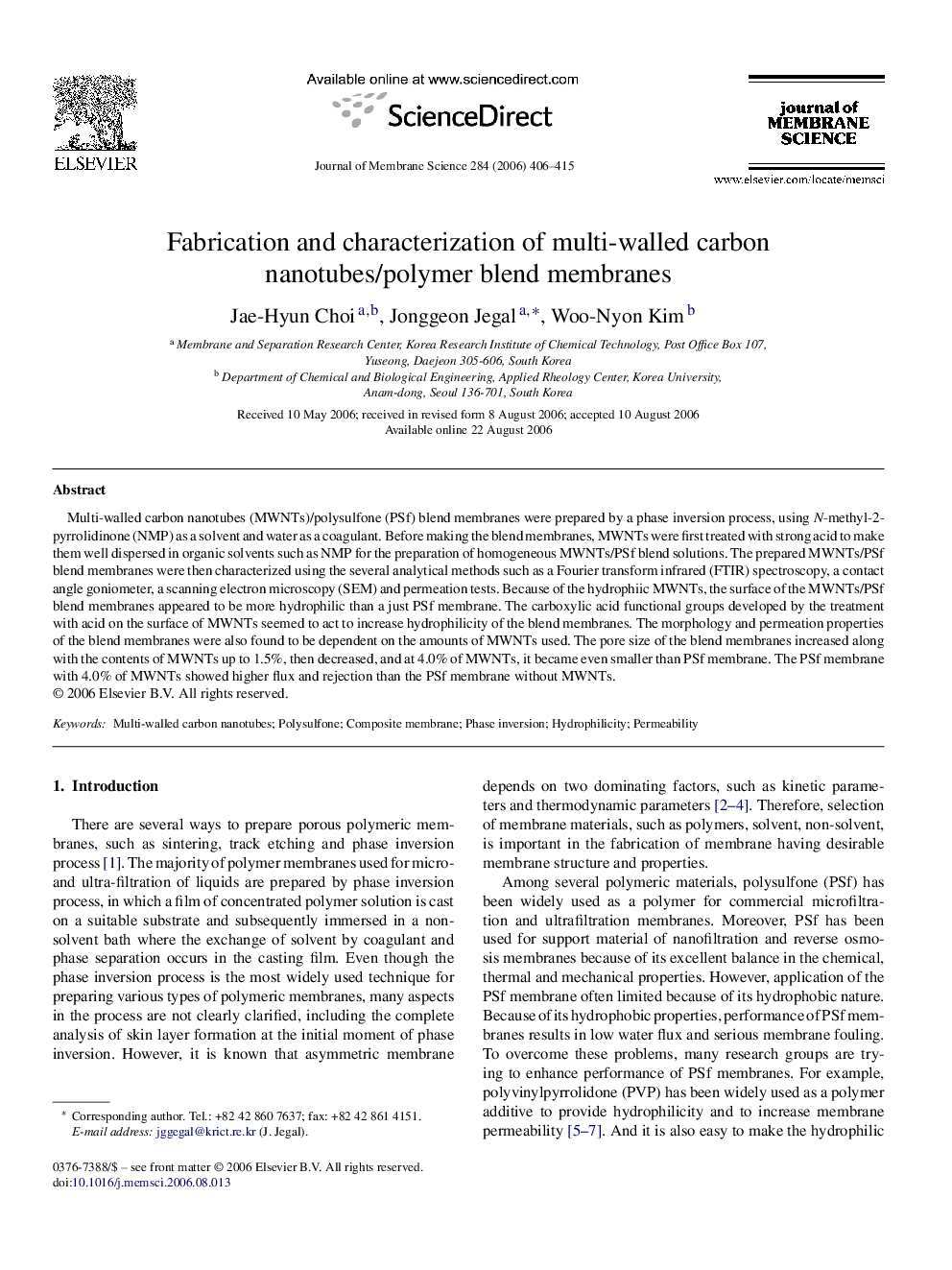| Article ID | Journal | Published Year | Pages | File Type |
|---|---|---|---|---|
| 639064 | Journal of Membrane Science | 2006 | 10 Pages |
Multi-walled carbon nanotubes (MWNTs)/polysulfone (PSf) blend membranes were prepared by a phase inversion process, using N-methyl-2-pyrrolidinone (NMP) as a solvent and water as a coagulant. Before making the blend membranes, MWNTs were first treated with strong acid to make them well dispersed in organic solvents such as NMP for the preparation of homogeneous MWNTs/PSf blend solutions. The prepared MWNTs/PSf blend membranes were then characterized using the several analytical methods such as a Fourier transform infrared (FTIR) spectroscopy, a contact angle goniometer, a scanning electron microscopy (SEM) and permeation tests. Because of the hydrophiic MWNTs, the surface of the MWNTs/PSf blend membranes appeared to be more hydrophilic than a just PSf membrane. The carboxylic acid functional groups developed by the treatment with acid on the surface of MWNTs seemed to act to increase hydrophilicity of the blend membranes. The morphology and permeation properties of the blend membranes were also found to be dependent on the amounts of MWNTs used. The pore size of the blend membranes increased along with the contents of MWNTs up to 1.5%, then decreased, and at 4.0% of MWNTs, it became even smaller than PSf membrane. The PSf membrane with 4.0% of MWNTs showed higher flux and rejection than the PSf membrane without MWNTs.
